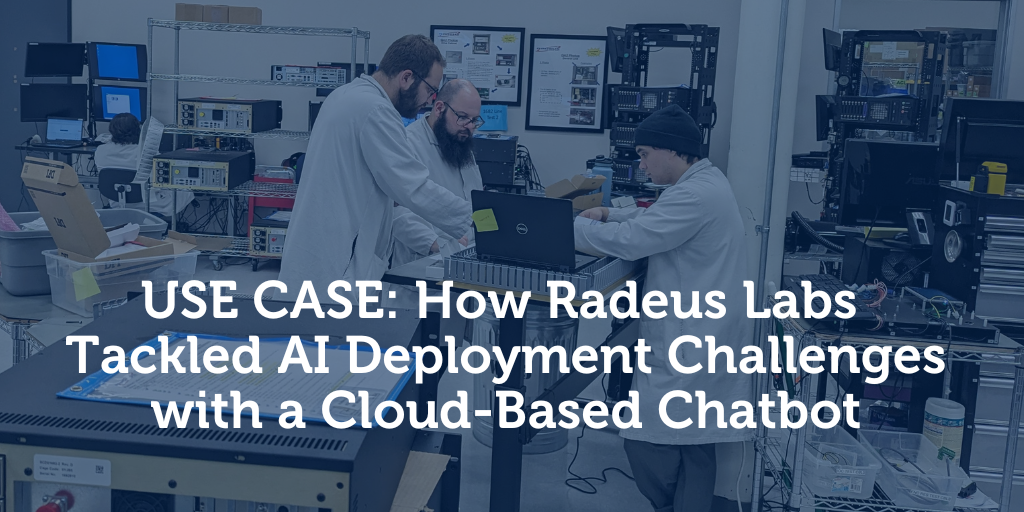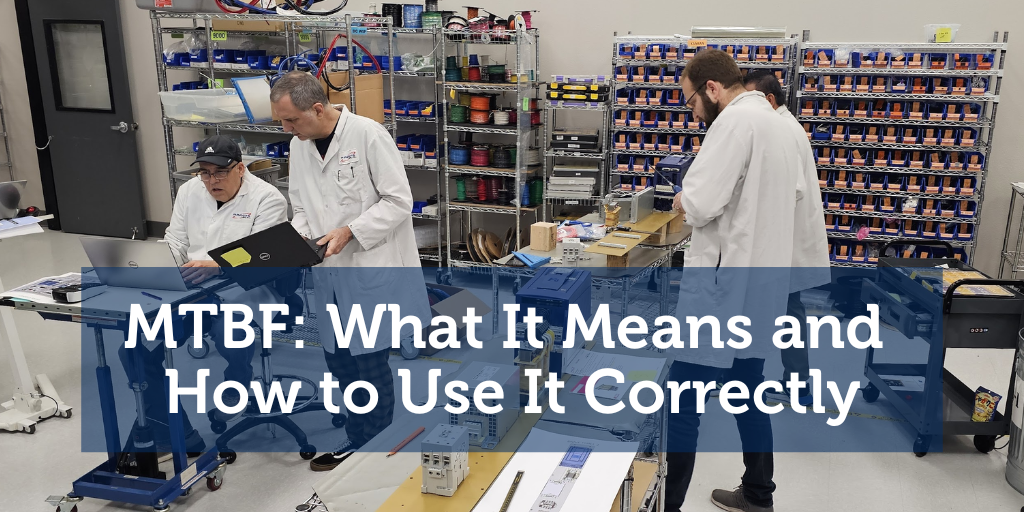AI is changing how teams manage information and interact with customers—but making it work securely and affordably inside your own organization is a different story. When we set out to build an internal AI chatbot, we had a dual mission: 1) improve how our team accessed technical product information and 2) give our interns meaningful experience working with artificial intelligence.
 But with recent analysis showing that 71.7% of AI tools used in the workplace are classified as high or critical risk (Cyberhaven), we knew we had to tread carefully. We saw the potential—faster answers for customer-facing staff, streamlined support, and real-world AI experience—but executing it with a cloud-based model brought more complexity than we expected.
But with recent analysis showing that 71.7% of AI tools used in the workplace are classified as high or critical risk (Cyberhaven), we knew we had to tread carefully. We saw the potential—faster answers for customer-facing staff, streamlined support, and real-world AI experience—but executing it with a cloud-based model brought more complexity than we expected.
What started as a promising solution soon became a lesson in the practical realities of deploying AI in a secure, cost-conscious environment. In this use case, we share the goals we set, the challenges we faced, what worked, what didn’t, and why it pushed us to reevaluate our infrastructure.
Specific Challenges with Cloud-Based AI
Initially, our chatbot showed promising results, significantly accelerating responses to technical queries and enhancing customer support interactions. However, we soon encountered several substantial challenges:
- AI Hallucinations: Our chatbot occasionally provided incorrect or misleading responses—commonly known as "AI hallucinations." This required continuous model retraining, extensive prompt refinement, and frequent manual validation, consuming significant developer and intern hours.
- Limited VRAM Capacity: Cloud GPU instances often lacked sufficient VRAM for efficient model training and rapid iterations, severely slowing down refinement processes and delaying critical updates.
- Escalating Cloud Costs: The cloud provider’s pay-per-training pricing model quickly became unsustainable, as repeated refinements drove up operational expenses significantly, raising concerns about long-term financial viability.
- Initial Technical Missteps: Initially, we attempted to embed all information directly into the chatbot's instructions, not realizing that employing a vector store was the correct approach. This oversight caused early inefficiencies and extended development time.
- Technical Setbacks: We faced several technical hurdles, including persistent cross-origin resource sharing (CORS) errors with our browser extension, token limit challenges causing incomplete chatbot responses, and accidental deletion of the bot during API testing, resulting in significant data loss due to infrequent backups.
Impact and Lessons Learned
Despite these setbacks, the chatbot delivered considerable benefits:
- Drastically reduced technical inquiry response times.
- Improved internal knowledge sharing and accuracy of responses.
- Provided our interns with valuable, real-world AI training and experience.
The challenges we faced taught us several critical lessons:
- Frequent backups are essential to mitigate potential data loss and downtime.
- Infrastructure efficiency and careful token management significantly affect operational costs and scalability.
- Continuous refinement and validation are crucial to maintain chatbot accuracy and reliability.
Although overall, we find cloud-based Chatbots a great approach for information that is already available to the general public, training them on anything related to our IP or internal facing documents is a risk we are not willing to take.
Why Radeus Labs is Evaluating On-Premise AI Solutions
These experiences highlighted the inherent limitations and hidden costs of relying exclusively on cloud-based AI infrastructure—particularly in terms of security, data control, and scalability. Consequently, we at Radeus Labs are actively exploring an on-premise AI server solution to:
- Strengthen our data security and enhance compliance.
- Stabilize infrastructure costs by transitioning to predictable, fixed expenses.
- Improve flexibility, performance, and reliability with optimized local hardware.
A Safer Path Forward: On-Prem AI for Security-Focused Teams
For organizations like ours that handle sensitive data or hold government contracts, cloud-based AI tools introduce significant compliance and security risks. Concerns about data sovereignty, vendor lock-in, and inadvertent data exposure have driven us to develop a safer and more strategic approach.
 To support others navigating similar challenges, we've compiled our experiences and insights into a comprehensive guide: AI Security and Compliance: Why Cloud Isn’t Always Safe Enough.This ebook explores the strategic advantages of deploying AI servers on-premise, covering:
To support others navigating similar challenges, we've compiled our experiences and insights into a comprehensive guide: AI Security and Compliance: Why Cloud Isn’t Always Safe Enough.This ebook explores the strategic advantages of deploying AI servers on-premise, covering:
- How on-prem AI enhances compliance with critical frameworks such as CMMC, NIST, ISO/IEC 27001, and GDPR.
- Risks associated with cloud-based AI deployments, including data leakage, vendor lock-in, and uncontrolled data exposure.
- Practical strategies for deploying secure, scalable AI infrastructure locally.
- Real-world advice on reducing operational risks and maintaining control over sensitive data.
Get the insights you need to deploy AI with greater security and control. Download our guide now to discover how adopting an on-premise AI approach can safeguard your business and ensure compliance in today's rapidly evolving regulatory landscape.






